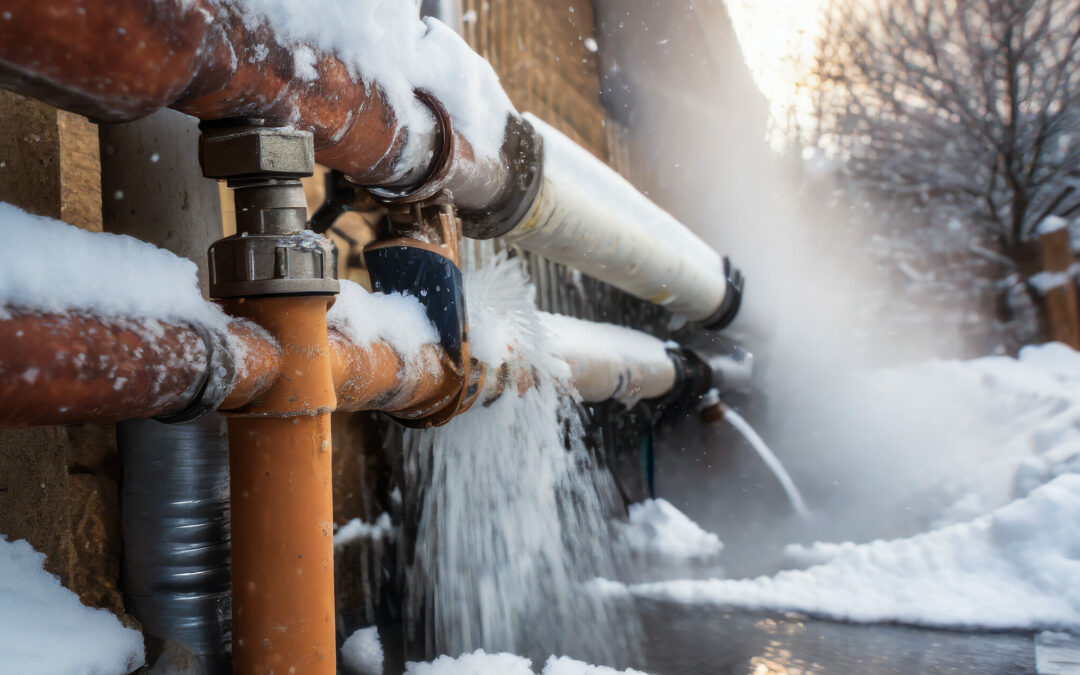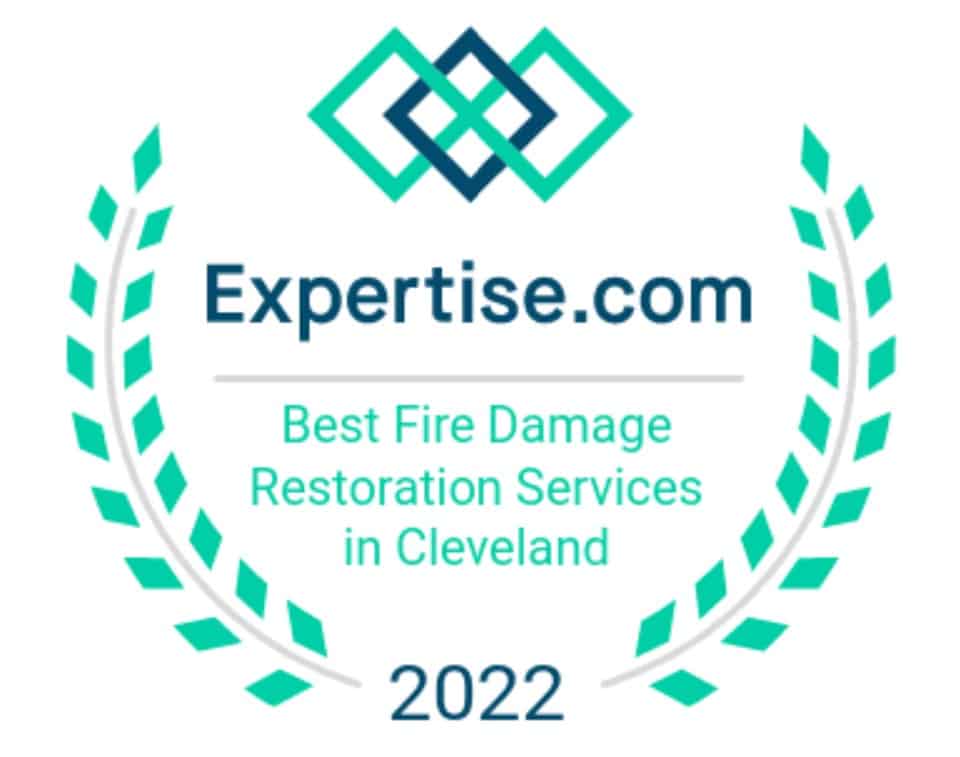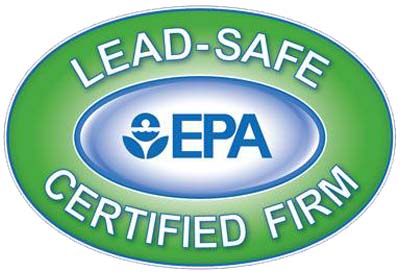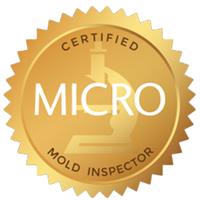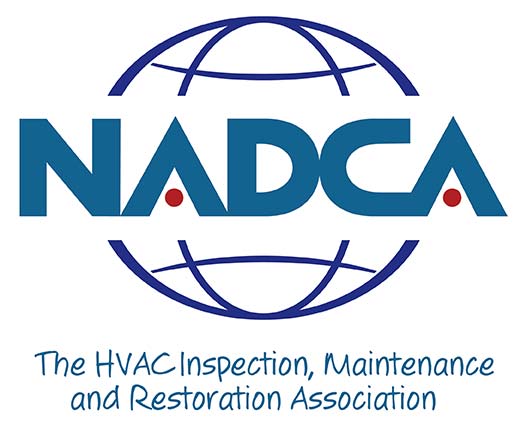Cleveland’s winters are notorious. And as another one settles in, homeowners must be on guard against the challenges that the season brings- particularly the risks of water damage. The freezing temperatures, snowfall, and ice accumulation are major threats to the integrity of homes. This potentially leads to issues like burst pipes, roof leaks, and foundation damage.
In this guide, we’ll dive into the specific risks that go along with winter water damage and provide expert advice tailored to Cleveland homeowners like you.
We are a team of local professionals who have helped to restore countless homes in the Cleveland area after damage. And we have seen a lot of winter water damage. Because of that, we have collected a wealth of experience and knowledge specific to winter conditions.
The following advice can help you protect your home from the harsh effects of winter weather. Whether you’re a longtime Cleveland resident or new to the area, these tips and strategies will empower you to protect your home against winter water damage. Let’s get to work preparing your home to stay safe and comfortable through the cold months ahead.

Understanding Winter Water Damage
To start with, here’s a list of the 8 most common causes of winter water damage:
- Frozen Pipes: When temperatures drop, water within pipes can freeze, leading to pipe bursts once the ice expands.
- Ice Dams: Accumulation of snow and ice on roofs can create ice dams, hindering proper drainage and causing water to seep into the home.
- Roof Vulnerabilities: Existing roof issues, coupled with the freeze-thaw cycle, can result in leaks and water entry points.
- Gutter Problems: Clogged or damaged gutters can prevent proper water drainage, leading to overflow and potential water damage.
- Foundation Cracks: Freezing temperatures can exacerbate existing cracks in the foundation, allowing water to seep into the home.
- Snowmelt Flooding: Rapid melting of accumulated snow, especially during temperature fluctuations, can lead to flooding.
- Poor Insulation: Inadequate insulation can contribute to the formation of ice dams and increase the risk of frozen pipes.
- Appliance Failures: Appliances like water heaters or washing machines may malfunction during winter, causing water leaks.
The intensity of Cleveland’s weather makes these challenges bigger. The city experiences intense winter conditions, with temperatures frequently dropping below freezing. The combination of heavy snowfall and low temperatures increases the risk of frozen pipes and ice dams. Clevelanders must be particularly vigilant about these threats. But by understanding the specific challenges posed by their local climate, homeowners can be proactive. Knowing what to watch out for is the first step in avoiding serious water damage this winter.

Winterizing Your Home: A Comprehensive Guide
Winterizing your home is crucial to prevent potential water damage during the colder months. Avoiding damage is always easier than fixing it- prioritize winterizing before you regret putting it off!.
Inspect and Insulate Pipes
Focus on three things as you inspect your pipes:
- Check for Leaks: Inspect all visible pipes for any signs of leaks. Even small drips can lead to significant issues over time. Look for water stains, mold growth, or rust around pipes.
- Examine Joints: Pay close attention to joints and connections in the pipes. These areas are prone to leaks. If you notice any loose connections, tighten them. If there are signs of corrosion or damage, consider replacing the affected section.
- Inspect Insulation: Check the insulation around pipes, especially in areas with exposure to cold air. Insulation helps maintain the temperature of the water inside the pipes and prevents freezing.
Then, take these steps to insulate them:
- Choose the Right Insulation: Use insulation materials designed for pipes. Foam pipe sleeves or fiberglass wraps are common options. Ensure that the insulation has the appropriate R-value for your climate.
- Wrap Exposed Pipes: Focus on pipes in unheated areas such as basements, crawl spaces, and attics. Also, insulate pipes located along exterior walls. Wrap the insulation snugly around the pipes, covering as much length as possible.
- Secure with Tape or Wire: Use tape or wire to secure the insulation in place. This ensures it stays tightly wrapped around the pipes, providing effective protection.
- Insulate Outdoor Faucets: If you have outdoor faucets, insulate them with faucet covers. These covers provide an extra layer of protection against freezing temperatures.
- Seal Gaps and Cracks: Inspect the areas around pipes for any gaps or cracks in walls, floors, or ceilings. Seal these openings with caulk or insulation to prevent cold air from reaching the pipes.
Focus on the Roof
- Inspect for Damages: Begin by carefully inspecting the roof for any existing damages. Look for missing or damaged shingles, cracks, or gaps. Pay attention to areas around chimneys, vents, and skylights, as these are vulnerable points.
- Clear Debris: Remove any debris, such as leaves, branches, or built-up snow, from the roof. Accumulated debris can lead to water pooling, which increases the risk of leaks.
- Check Flashing: Examine the flashing around chimneys, vents, and other protrusions. Flashing is crucial for preventing water penetration. Ensure it is intact and well-sealed. Replace any damaged flashing promptly.
- Clean Gutters and Downspouts: Clean gutters and downspouts to allow proper drainage. Clogged gutters can lead to water overflow, which may find its way into the home. Install gutter guards to prevent debris buildup.
- Evaluate Attic Insulation: Adequate attic insulation helps maintain a consistent temperature in the home, reducing the risk of ice dams. Inspect the insulation and add more if necessary. Proper insulation prevents warm air from escaping, minimizing the potential for ice dam formation.
- Address Ice Dams: Ice dams can form on the roof’s edge, leading to water seepage under shingles. Use a roof rake to remove snow from the lower portion of the roof, preventing ice dams from forming.
- Professional Inspection: Consider hiring a professional roofing inspector. They can identify potential issues that might be challenging to spot for an untrained eye. A thorough inspection can catch problems early, preventing extensive water damage.
Check Your Heating System
Checking your heating system is a proactive measure that helps to maintain a warm and dry home during winter. This can prevent issues like frozen pipes, burst pipes, ice dams, and other factors that can contribute to water damage. Here are some steps to take.
- Inspect the Furnace: Before the winter season, inspect your furnace for any signs of wear or malfunction. Replace air filters regularly, as clogged filters can strain the system, leading to inefficiency and potential issues.
- Clean and Test Ducts: Clean ducts and vents to ensure efficient heating distribution throughout the home. Test the heating system to verify that it responds promptly and maintains a consistent temperature.
- Inspect the Thermostat: Make sure that your thermostat is working correctly. Consider upgrading to a programmable thermostat if you don’t have one. This allows you to regulate temperatures based on your schedule, optimizing energy usage.
- Ensure Proper Insulation: Adequate insulation in your home helps retain heat and reduces the load on your heating system. Insulate attics, walls, and basements to maintain a comfortable indoor temperature.
- Schedule Professional Maintenance: Consider scheduling professional maintenance for your heating system. A qualified technician can perform a complete inspection, clean system parts, and identify potential issues before they get worse.
Pay Attention to Your Landscaping
Trim tree branches to prevent them from breaking under the weight of snow and ice. This helps to prevent water damage in three ways:
- It can prevent ice dams. Overhanging tree branches can collect snow and ice. When temperatures fluctuate, this accumulated ice can melt and refreeze, leading to ice dams on your roof. Ice dams can block the natural flow of melted snow, causing water to seep under shingles and into your home. Clear leaves and debris from your yard and outdoor drains to maintain proper drainage.
- It reduces the Risk of Limb Breakage. Heavy snow or ice accumulation on tree branches increases the risk of branches breaking. If a large limb falls onto your roof, it can cause significant damage, including leaks and structural issues.
- It Minimizes Debris Accumulation: Leaves, twigs, and other debris from overhanging branches can accumulate in your gutters and downspouts. When these become clogged, water cannot flow freely, leading to overflow. This overflow can contribute to water pooling around your home’s foundation, risking basement flooding and water damage.
Invest in a Home Monitoring System
There are two main ways that a home monitoring system can protect you from water damage:
- Leak Detection: Advanced home monitoring systems include sensors that can detect leaks or unusual water activity. These sensors can be strategically placed in areas prone to water damage, such as basements, near appliances, or around pipes.
- Temperature Monitoring: Some systems also offer temperature monitoring features. This is particularly useful during winter, as the system can alert you if temperatures drop to levels that could lead to frozen pipes or other cold-related issues.
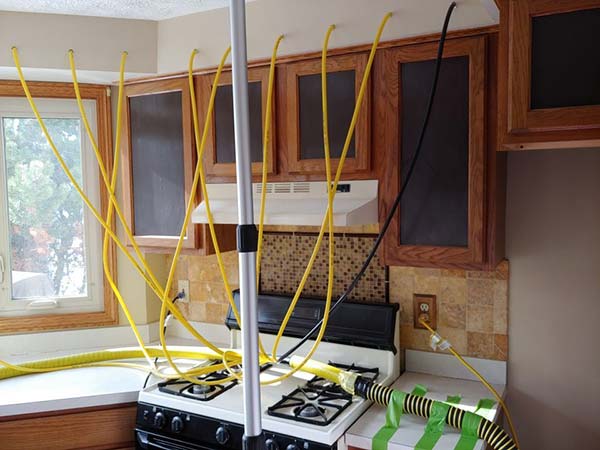
What To Do Next
We hope that this guide has encouraged you to start winterizing your home- and has given you a good idea of where to start.
Of course, despite our best efforts, winter water damage still happens sometimes. If you’re in a situation where your home has suffered from water damage, a professional service can help you stop it in its tracks and clean up the mess before it gets worse. Call Cleveland Water and Fire Restoration today for advice on next steps from a trusted Cleveland professional.


